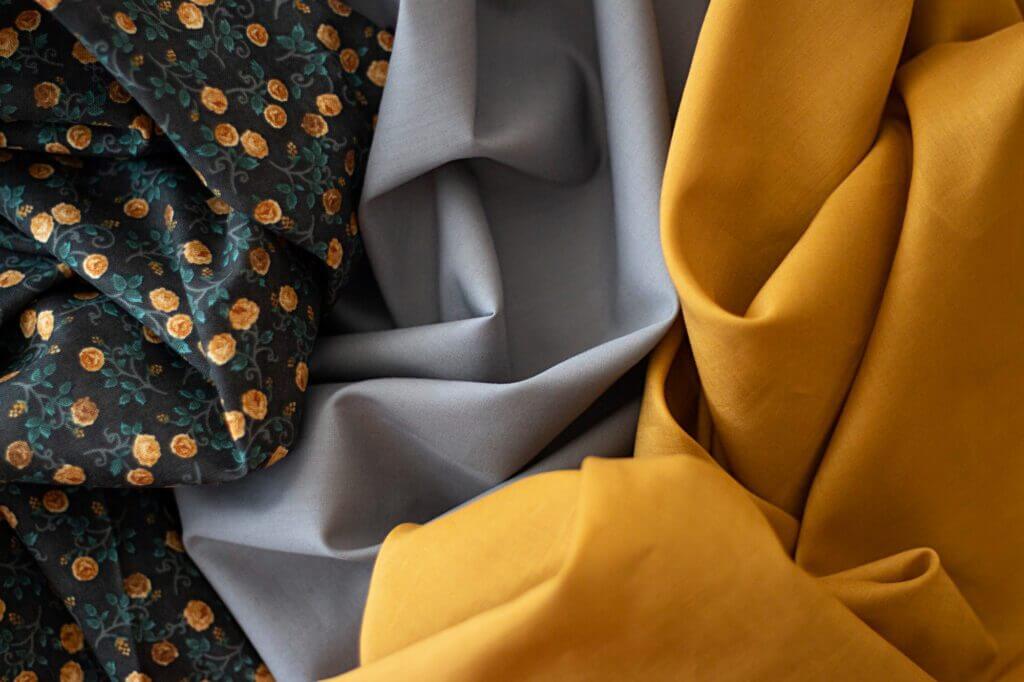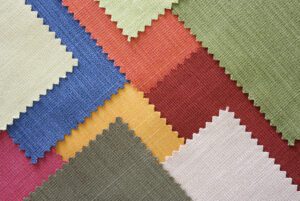Linen and cotton are two of the most popular textile materials in the world currently, and they are both derived from natural fibres. Both fabrics might seem very similar, but in examining both materials closely, you would discover they slightly differ based on different elements, like breathability or absorbency. These slight differences make them each unique.
Their productions are also believed to have a comparatively low environmental impact, but some studies, both on linen and cotton, suggest that there are major concerns associated with the production phase of these fabrics that require regulatory actions. This is part of the reason various textile associations have been set up globally; to maximize support for textile manufacturing companies and ensure true sustainability practices in chemicals policy, circular economy, sustainable supply chains and industrial emissions.

What is Linen?
Linen is a sustainable fabric made from the flax plant. It is very strong and lightweight. The flax plant is cultivated in almost every country in the world and has been a thriving source of fibre for over 6,000 years. Unlike cotton, linen takes longer to harvest and weave into the fabric due to the texture of the flax fibres. The extracted fibres are stored for long periods to soften them and make them easier to weave.
This environment-friendly fabric is mainly used for homeware applications. Its clothing is desirable in hot and humid climates. Unlike cotton, which tends to retain moisture for longer periods, linen dries up faster, which reduces heat retention during hot weather conditions.
Linen is much more labourious to manufacture than cotton. This has resulted in the reduction of the fabric’s popularity. In 2019, its production was barely one per cent of the total global fibre production, and China produces about 60 per cent of that one per cent. Nevertheless, its unique, desirable attributes still pull a significant amount of demand in the textile industry.
What is Cotton?
Cotton is a soft silky fibre gotten in its raw state from cotton plants, part of the genus Gossypium and the family Malvaceae.
Cotton is commonly referred to as staple fibre, as it is one of the most important fabrics in the textile industry worldwide. It is very recyclable. The fibre is composed of different varying lengths of material. The fibre can be found at the tip of the cotton plant called the boll. The boll serves as an encasing for the soft and fluffy raw material. The material is then spun and woven to create the fabric used in textile factories.
What are the different types of Linen?
Linen is mainly categorized into four major types. They are all derived from processed and spun flax, but the difference lies in the weaving techniques used to produce them.
- Damask linen: This type of linen is ornate and delicate, formed on a jacquard loom. The end result is very similar to embroidery. Consumers typically use damask linen for decorative purposes and not everyday use.
- Plain-woven linen: This type has a relatively rough texture. It is also highly durable. Textile producers often use it for making hand towels, bath towels, dish towels, etc.
- Loosely woven linen: This utilitarian type of linen is highly absorbent and often used in making reusable diapers, sanitary napkins, etc. But it is the least durable of all the types.
- Sheeting linen: This type has a soft, untextured surface, commonly used in making apparel and bedding. Its thread count is significantly higher than the other types, making it suitable for making very dense and durable fabrics.
Key differences between Linen and Cotton
Linen and cotton are materials with very similar attributes. Nevertheless, there are several key differences between these two natural fabrics. They include:
- Durability: Linen has less elasticity and flexibility than cotton, making it more durable. Cotton is not as rigid and doesn’t last as long as linen because the cellulose fibres in the cotton yarn are slightly shorter and wrapped looser than those in linen yarn.
- Softness: Linen is harder than cotton because flax fibres are rougher than cotton fibres. For instance, fresh cotton sheets are very soft and can last about five years, but linen sheets only become soft after several washes and last up to 30 years.
- Texture: Cotton makes smoother fabric as a result of denser weaving.
- Appearance. Linen pills are less than cotton, as linen fibres are stronger. They both wrinkle easily, but linen wrinkles slightly more due to their stiffness.
- Hypoallergenic: Both fabrics are hypoallergenic. However, cotton is slightly worse for people with allergies as the higher thread count, and dense weave are more likely to trap dust and particles.
- Absorbency: Linen and cotton are very absorbent materials. Water strengthens both fabrics, but cotton is slightly more absorbent.
- Water-wicking is the ability to absorb water or sweat from the skin and dry it quickly. Linen has natural water-wicking qualities, and cotton also wicks moisture, but not as well as linen.
- Breathability: Both fabrics are breathable, but cotton is slightly less breathable in some cases. Linen fibres are hollow, which allows air and water to circulate easily through the material.
- Warmth: Cotton does not conduct heat and serves better for warmth during cold weather.
- Cost: Linen fabrics are generally more expensive than cotton fabrics.
Here’s a table summarizing their differences;
| Properties | Linen | Cotton |
| Durability | More durable | Less durable |
| Softness | Harder fibre | Softer fibre |
| Texture | Makes rougher fabric | Makes smoother fabric |
| Appearance | Wrinkles slightly more than cotton | Wrinkles slightly less |
| Hypoallergenic | More suitable for people with allergies | Less suitable |
| Absorbency | Slightly less absorbent | Slightly more absorbent |
| Water wicking | Higher water-wicking qualities | Lower water-wicking qualities |
| Breathability | Slightly more breathable | Slightly less breathable |
| Warmth | Less suitable for cold weather | Serves better for warmth |
| Cost | Generally more expensive | Generally less expensive |
How are Linen fabrics made?
Linen fabric contains cellulose fibre, which is the main constituent in the raw material found in the stems of the flax plants.
The process for linen production is generally outlined below:
- Planting and growth: In modern-day agriculture, machines sow flax seeds. Since they do not tolerate heat, flax farmers plant flax seeds in the cooler part of the year.
- Harvesting: Once the flax stems turn yellow and their seeds turn brown, the plants are ready to be harvested. This is usually after about 100 days of growth. Machines are usually used for this process, but some local farmers still harvest flax by hand.
- Fibre Separation: The harvested flax stalks are processed through a machine that removes seeds and leaves. Then, the flax stalks go through a process called retting, where manufacturers separate the flaxes’ fibrous outer stalks from their soft, woody interior. This process is delicate and handled expertly to avoid damage to the flax fibres.
- Breaking: The decomposed stalks are broken up or crushed with rollers. Rotating paddles are then used to remove the outer fibres from the stalks. This process separates the unusable fibres (the outer fibres) of the flax stalks from the usable ones (inner fibres).
- Combing: The separated inner fibres are combed into thin strands.
- Spinning: The combed strands of flax fibre are connected to devices called spreaders. The resulting strings are called rovings, which are finally spun into yarns.
- Reeling: The manufacturers then reel the resulting yarn onto bobbins. They perform this process in wet, humid conditions to ensure that the flax yarn doesn’t fall apart. They also run the spun yarn through a hot water bath to ensure better yarn cohesion.
- Drying and dyeing: Finally, the flax manufacturers dry the finished yarn, apply the dye and make the necessary final treatments.
Linen fabrics and environment
The major environmental issue in linen production is the release of toxic chemicals used during the manufacturing process into surrounding ecosystems. Toxic substances, such as alkali or oxalic acid, are commonly used during the retting process of flax to obtain the inner fibre faster and more efficiently.
For environmental reasons, water retting of flax stems is now usually preferred. For linen fabric to be certified as organic today, the flax fibre must be water-retted.
In addition to the issue of releasing toxic chemicals into the ecosystem, there may also be the concern of land use for flax production. Cultivation processes may degrade the soil, which can lead to soil erosion and expansion of farmlands into neighbouring natural habitats.
Furthermore, most textile workers are usually forced to work under horrific conditions for insufficient pay. Consequently, these factory workers become unable to contribute to local economies.
Despite these troubling concerns, the fact remains that linen is one of the least environmentally damaging textiles in the industry. Unlike synthetic fabrics, natural fabrics like linen are biodegradable, which means they can be reabsorbed into the surrounding environment in a matter of years instead of centuries. Natural fibres also don’t contribute to the ongoing microfibre pollution crisis, threatening aquatic and human life. With proper land stewardship, linen can be cultivated in a way that is not environmentally harmful. Problems arise when textile manufacturers choose to use inexpensive processes that may be environmentally damaging to meet the global demand for linen products without incurring prohibitive overhead costs.


